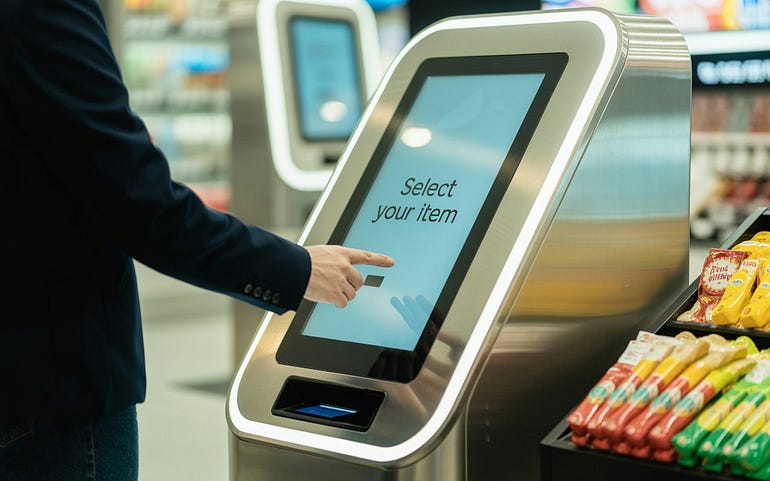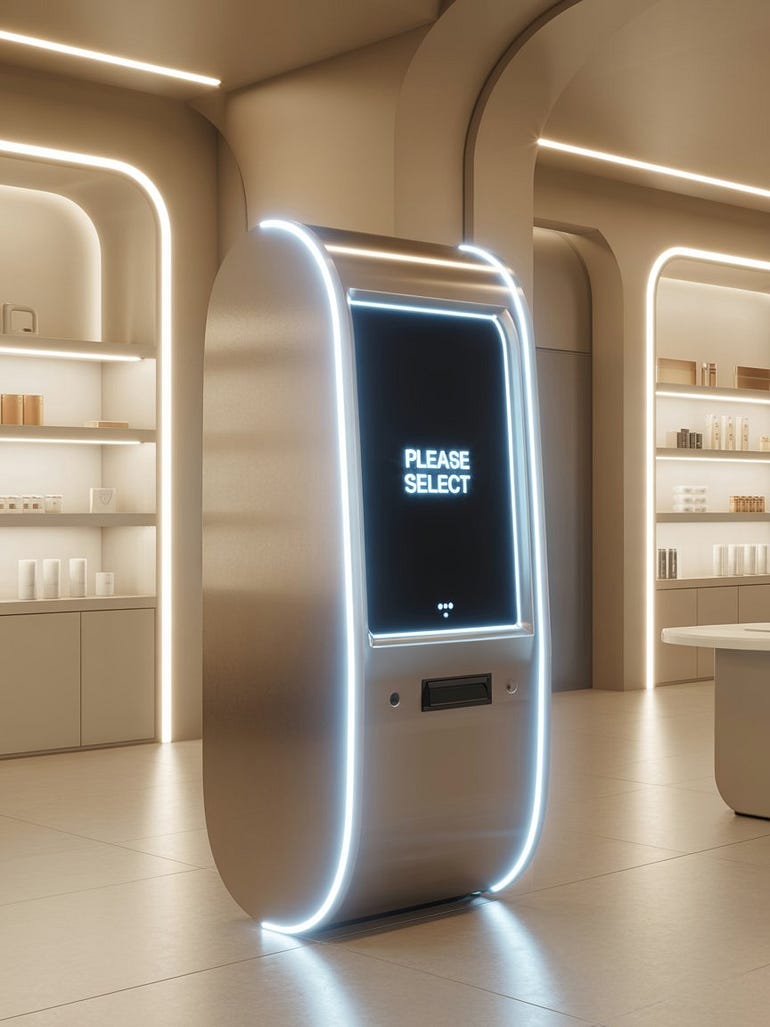
In today’s fast-paced retail environment, speed, convenience, and personalization are no longer luxuries — they’re expectations. As consumer behaviors shift toward self-service, digital interaction, and minimal contact, self-service kiosks are becoming a staple in modern retail stores. From major supermarkets to boutique outlets, these interactive machines are revolutionizing customer experiences while improving operational efficiency.
The growing trend of self-service kiosks stems from their ability to reduce wait times, empower customers, and free up staff for more strategic tasks. However, the success of these kiosks largely depends on choosing the right type tailored to your store’s specific needs. This blog explores the different types of self-service kiosks, key selection factors, top providers, and implementation strategies, as well as a look into the future of retail kiosks.
Types of Self-Service Kiosks for Retail
Interactive Touchscreen Kiosks
Interactive touchscreen kiosks serve as a digital assistant for customers, offering real-time interaction through vibrant, intuitive interfaces. These kiosks can showcase products, provide brand stories, and even suggest complementary items. Ideal for apparel stores, electronics retailers, and department stores, they engage users by making product browsing informative and entertaining.
Common Uses:
- Product lookup
- Loyalty program sign-ups
- Browsing digital catalogs
Advantages:
- Enhances customer engagement
- Reduces reliance on staff for general inquiries
- Helps boost upselling and cross-selling efforts
Payment and Checkout Kiosks
These kiosks are tailored specifically for handling transactions, allowing customers to scan, bag, and pay for their purchases without cashier assistance. With robust software and hardware integration, they streamline the checkout process and are commonly found in grocery chains, convenience stores, and large retail outlets.
Key Features:
- Contactless and card payment support
- Real-time syncing with inventory and POS systems
- Anti-fraud mechanisms
Benefits:
- Reduces checkout lines
- Improves transaction speed and accuracy
- Offers 24/7 payment convenience for unmanned locations
Information and Wayfinding Kiosks
Retailers with large floor spaces — such as shopping malls or warehouse outlets — can benefit immensely from kiosks that help customers navigate the premises and locate specific products or departments. These kiosks often integrate maps, search features, and customer service modules.
Applications:
- Store directories
- Product locators
- Event and promotion listings
Benefits:
- Improves in-store navigation
- Reduces customer frustration
- Enhances accessibility for new visitors
Order Placement and Customization Kiosks
For stores offering made-to-order or customizable products — like fast food restaurants, print shops, or build-your-own-gift outlets — these kiosks simplify complex self ordering processes. Customers can browse configurations, preview their selections, and place orders with minimal staff interaction.
Features:
- Real-time product customization
- Digital previews and upsell suggestions
- Integration with fulfillment or kitchen systems
Benefits:
- Improves order accuracy
- Increases sales through add-ons
- Enhances customer control and satisfaction
Key Factors to Consider When Choosing a Self-Service Kiosk
Store Size and Customer Traffic
The size of your retail space and the volume of customer traffic greatly influence kiosk deployment. A small boutique may only need one or two information kiosks, while a supermarket might require multiple checkout stations across various aisles.
Recommendations:
- Analyze footfall patterns
- Determine peak hours and zones of congestion
- Scale kiosk quantity and type accordingly
Integration with Existing Systems
Your chosen kiosk must integrate seamlessly with existing infrastructure like POS systems, inventory management platforms, and customer databases (CRM).
Why it matters:
- Ensures smooth data flow across systems
- Reduces manual workload
- Supports omnichannel retail experiences
User Experience and Accessibility
Kiosks should be designed with usability in mind, ensuring every customer — regardless of age or ability — can easily interact with them.
Key UX Considerations:
- Large, responsive touchscreens
- Multilingual interfaces
- ADA compliance (height, screen readability, button accessibility)
Accessibility Benefits:
- Expands customer base
- Reflects an inclusive brand image
- Increases kiosk usage rates
Security and Privacy Features
Retail kiosks often handle sensitive data, including credit card numbers and personal details. Security must be a priority.
Essential Security Measures:
- End-to-end encryption for transactions
- Secure login or authentication for staff features
- GDPR/CCPA compliance
Outcome:
- Builds customer trust
- Protects brand reputation
- Prevents costly data breaches
Cost and ROI Considerations
While kiosks involve upfront investment, they can deliver substantial ROI through labor savings, faster transactions, and increased sales.
Cost Analysis Factors:
- Initial hardware and software costs
- Maintenance and upgrade expenses
- Expected lifespan and service coverage
Measuring ROI:
- Reduction in staffing costs
- Increase in average basket size
- Improved customer retention and satisfaction

Comparing Top Self-Service Kiosk Providers for Retail
NCR Kiosks
A global leader in retail technology, NCR offers robust kiosk solutions optimized for grocery, convenience, and department stores.
Strengths:
- Comprehensive POS integration
- Wide range of kiosk formats
- Strong customer support
Weaknesses:
- Higher pricing for smaller retailers
User Feedback:
Highly reliable but complex to deploy without tech support.
Diebold Nixdorf Kiosks
Diebold Nixdorf specializes in retail banking and large-scale retail environments, offering secure and scalable kiosks.
Unique Offerings:
- ATM-grade security
- Durable builds for high-traffic use
Ideal For:
- Chain supermarkets
- Hypermarkets
- Hybrid retail-banking spaces
Zebra Technologies Kiosks
Zebra provides interactive kiosks with strong barcode scanning and RFID capabilities, ideal for inventory-heavy stores.
Advantages:
- Powerful tech integration
- Scalable for enterprise-level rollouts
Best Use Cases:
- Electronics retailers
- Industrial supply stores
Pyramid Computer Kiosks
Known for their highly customizable hardware, Pyramid offers modular kiosks for various retail formats.
Highlights:
- Sleek, modern designs
- Tailored builds for fashion, hospitality, and entertainment
Customer Reviews:
Valued for versatility and build quality.
SLI Kiosks
SLI specializes in innovation-driven designs, particularly for small and mid-size retailers.
Strengths:
- Agile development
- Excellent after-sales support
Notable Features:
- AI-powered recommendation engines
- Compact kiosks for limited floor space
Implementation Best Practices for Retail Self-Service Kiosks
Strategic Placement Within the Store
Kiosks should be installed in high-traffic or problem-solving areas to ensure visibility and usefulness.
Tips:
- Place checkout kiosks near exits
- Position information kiosks at entryways or product-dense zones
- Avoid clustering kiosks together
Staff Training and Customer Support
Even with self-service, human support remains crucial. Train your team to assist customers and troubleshoot minor issues.
Benefits:
- Faster resolution of problems
- Smoother customer journeys
- Increased kiosk adoption
Maintenance and Technical Support
Kiosks need regular updates, cleaning, and component checks. Work with vendors who offer proactive support.
Recommended Actions:
- Weekly cleaning and software updates
- Quarterly hardware inspections
- Real-time monitoring tools
Analyzing Usage Data for Continuous Improvement
Data collected from kiosks can inform layout decisions, stock planning, and customer behavior patterns.
Analytics to Track:
- Peak usage times
- Abandonment rates
- Frequently accessed functions
Outcome:
- Optimized store layout
- Better marketing campaigns
- Continuous UX improvements
Future Trends in Retail Self-Service Kiosks
AI and Machine Learning Integration
AI-driven kiosks can learn customer preferences and suggest products, promotions, or shopping routes.
Example Uses:
- Personalized recommendations
- Predictive restocking
- Smart upselling modules
Contactless and Mobile Payment Innovations
As mobile wallets and NFC payments grow, kiosks are adapting to accept a wide array of digital transactions.
Emerging Technologies:
- Apple Pay, Google Pay, UPI QR
- Biometric verification
- Mobile-first interfaces
Enhanced Accessibility Features
Future kiosks will cater better to visually impaired, elderly, and differently-abled customers.
Innovations:
- Voice navigation
- Screen reader compatibility
- Adjustable height and contrast settings
Sustainability and Energy Efficiency
Retailers are turning to eco-conscious kiosks that consume less power and use recyclable materials.
Examples:
- Solar-powered kiosk modules
- Sleep modes during inactivity
- LED backlighting
Conclusion
Self-service kiosks have emerged as game-changers in the retail industry. Their ability to streamline operations, reduce costs, and elevate the customer experience makes them an essential investment. However, the benefits can only be fully realized when the kiosk type, provider, and implementation plan align closely with the store’s needs.
Whether you’re a large retailer aiming to cut checkout lines or a boutique brand wanting to showcase a digital catalog, the right kiosk solution can transform your in-store experience. As technology evolves, staying ahead with innovative, accessible, and sustainable kiosks will keep your retail business competitive and customer-centric.
Ready to upgrade your retail experience? Thoughtfully evaluate your options, train your team, and embrace the power of self-service to unlock new growth opportunities.
Comments on “The Rise of Self-Service Kiosks in Retail: Choosing the Right Solution for Efficiency and Customer Satisfaction”